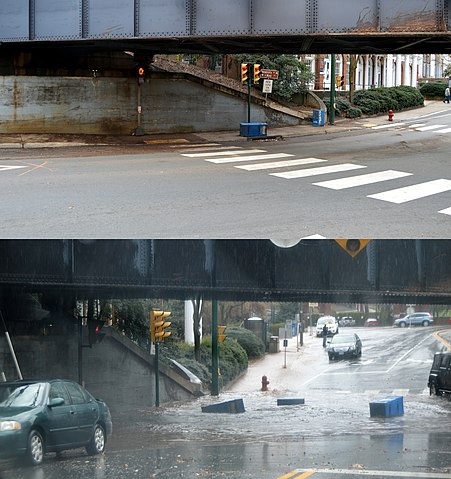Flash floods are rapid and intense floods that can occur within minutes or hours of heavy rainfall or the sudden release of water. These events can have devastating impacts on both the environment and human communities. Here are some of the key aspects of the devastating impact of flash floods:
1. Sudden Onset:
- Flash floods are characterized by their swift and unexpected onset. The rapid rise of water levels catches people off guard, leaving little time for evacuation or preparation.
2. Loss of Lives:
- Flash floods can result in the tragic loss of human lives. The sudden and powerful flow of water can sweep away individuals, vehicles, and structures in its path.
3. Property Damage:
- Flash floods cause extensive damage to homes, infrastructure, and businesses. Rapidly moving water can erode soil, undermine foundations, and carry debris that damages buildings and bridges.

4. Infrastructure Destruction:
- Roads, bridges, culverts, and other infrastructure are vulnerable to the force of flash floods. Erosion and sedimentation can lead to the collapse of structures, disrupting transportation networks.
5. Soil Erosion:
- The swift flow of water during flash floods contributes to significant soil erosion. This erosion can lead to the loss of fertile topsoil, affecting agriculture and downstream water quality.
6. Impact on Agriculture:
- Flash floods can inundate farmlands, destroying crops and disrupting agricultural activities. The sediment and debris carried by floodwaters can render soil unsuitable for cultivation.
7. Loss of Livestock:
- Livestock in flood-prone areas are at risk of being swept away by flash floods. This not only results in economic losses for farmers but also impacts the livelihoods of communities dependent on agriculture.
8. Contamination of Water Sources:
- Flash floods can carry pollutants, debris, and contaminants into water bodies, leading to the contamination of drinking water sources. This poses risks to public health and can result in waterborne diseases.
9. Displacement of Communities:
- Communities in flood-prone areas may be forced to evacuate due to flash floods. This displacement can lead to temporary or long-term homelessness and the need for emergency shelters.
Addressing the devastating impact of flash floods involves a combination of improved infrastructure, land use planning, early warning systems, community preparedness, and sustainable environmental management practices. Reducing vulnerability to flash floods requires a comprehensive and collaborative approach at the local, national, and international levels.









